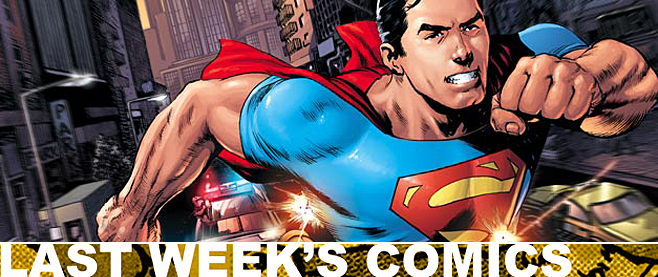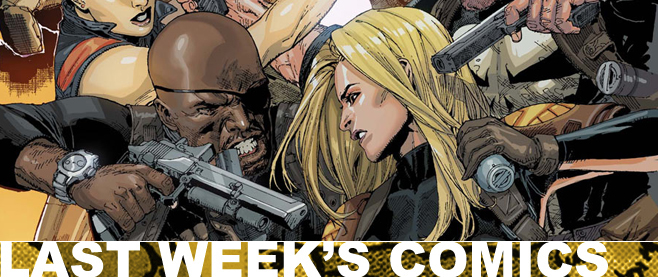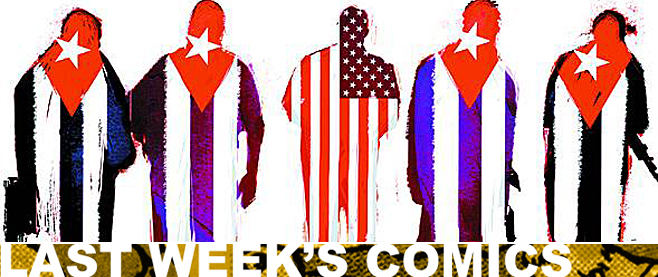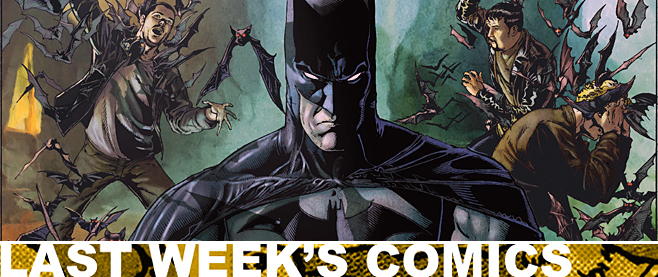
Last Week’s Comics 9/14/2011
[wpcol_1half id=”” class=”” style=””]
Swamp Thing #1

(DC – writer: Scott Snyder; art: Yanick Paquette)
Bannen’s Book of the Week: It’s hard to articulate what’s so likable about Scott Snyder’s writing. He’s quickly becoming the equal of Geoff Johns, but where Johns likes to go big and grand with his stories, Snyder uses a more subdued approach, one that puts an emphasis on character rather than action. The results, as illustrated in Swamp Thing #1, are astounding.
When Alan Moore wrote Swamp Thing, he altered the history of the character to make the Swamp Thing a copy of Alec Holland, absorbing his thoughts and memories. While Alec was dead, his memories lived on in the organic body of a beast. In the aftermath of Brightest Day, a lot of readers wondered just how DC planned on bringing the Swamp Thing back. Clearly, they are treating Moore’s run as the true origin of the
[/wpcol_1half] [wpcol_1half_end id=”” class=”” style=””]
Swamp Thing. But Scott Snyder has made a minor change: Alec Holland now remembers his time as the Swamp Thing, and even though he’s not bonded to it anymore, he’s still connected to the Earth.
The only comparison I can make is that Holland is much like David (Bruce) Banner from The Incredible Hulk television series. He’s running away from his past, even though it keeps following him, and there seems to be a real fear about reconnecting with the Swamp Thing. And even though we’re given a big mystery for the series, the real strength of the issue is in Alec’s narration.
We’re treated to Alec’s thoughts about growing up with a father who’s a florist and the way his pruning shears screamed when he cut the stems on flowers. These kinds of anecdotes feel sincere and instantly add depth to the character. The most intriguing part of the issue is a five-page conversation between Alec and Superman, and while the issue is word-heavy, not a single bit of it feels forced or cumbersome.
There’s a genuineness to Snyder’s writing, one that makes his characters come alive with emotion. Yanick Paquette deserves credit here as well for drawing some heartbreaking facial expressions as Alec recounts his false memories – those he shared with the Swamp Thing – and how his return has made him feel nothing but lost and alone.
Readers also get a hint of the bigger mystery of the series when a mammoth skeleton comes back to life and releases flies that do some horrific things to their victims. Paquette uses his panel construction wisely to give readers a feeling of claustrophobia as the men who find the mammoth corpse try to escape. Nathan Fairbairn is also to be applauded for his use of color, shadow and splotchiness – a tactic which comes in handy during the most violent part of the issue.
After reading Scott Snyder’s run on Detective Comics, I expected Swamp Thing to be good. It wasn’t until I read it, however, that I realized just how good it is. When I read a Scott Snyder comic, I feel like I’m witnessing something incredible, like I’m seeing an event unfolding, but one which will shape the course of history. Scott Snyder’s work is almost literary, in a sense, because of how beautifully crafted it is and how he captures the honest voices of his characters. Alec Holland is a sad, lonely man. And he has a big, swampy problem.
And DC should be kissing Snyder’s feet every day he comes into work.
[/wpcol_1half_end]




